
Haemophilia
Tel:
Editor: Suzanne O’Callaghan
Read National Haemophilia online https://www.haemophilia.org.au/



Haemophilia
Tel:
Editor: Suzanne O’Callaghan
Read National Haemophilia online https://www.haemophilia.org.au/

Looking for some simple information about von Willebrand disease (VWD) to share with others?
Our new Von Willebrand disease (VWD) fact sheet has answers to a range of FAQs with the very latest information:
• What is VWD? How do you get it?
• What are the symptoms and types?
• How is it diagnosed and treated?
Share it with your family – or keep it on hand for new doctors or school or other situations where you want to give a quick explanation.
And don’t forget to talk to your Haemophilia Treatment Centre (HTC) to keep up-to-date with treatment options for VWD.
Download the fact sheet from the HFA website: www.haemophilia.org.au/resources
Or contact HFA for print copies: E: hfaust@haemophilia.org.au
T: 03 9885 7800
Our thanks to the health professional experts and the HFA VWD consumer focus group for their contributions and advice.
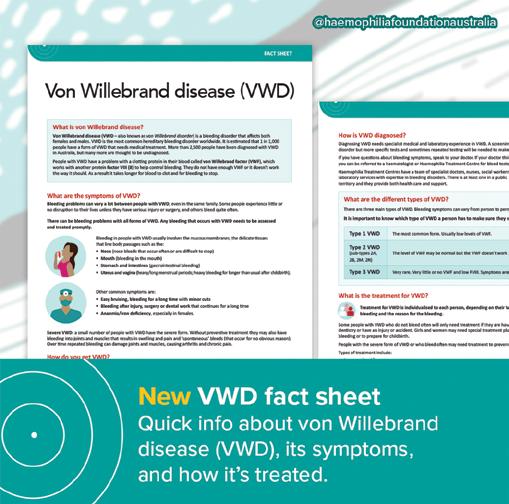

Gavin Finkelstein President, Haemophilia Foundation Australia
Thank you to the community, stakeholders and donors for a wonderful 2024. As we wrap up 2024, we reflect on our achievements.
We started the year with confirmed funding from the Australian Government Department of Health and the National Blood Authority – this was wonderful after a couple of years of uncertainty.
Education resources play a key role in our work and in keeping the community informed. We published five major resources this year and have more in draft format hopefully ready in 2025. On top of this, we launched the new look HFA and state/territory foundation websites.
The WFH 2024 World Congress in Madrid was a wonderful opportunity to meet others, network with national member organisations and hear the latest updates from around the world.
HFA Council held our AGM in October. Keep an eye out for our Annual Report, which will show our work and its impact over the last financial year.
There were also significant birthdays for HFV and HFACT this year – 50 years for HFACT and 70 years for HFV. It was wonderful to see the celebrations that each Foundation hosted and a great opportunity to reflect on the past and how far we have come now.
With new therapies coming to market, including gene therapy, we want to be sure our community members have the information they need to make informed treatment decisions. We have been working on the Gene and Emerging Therapies Hub and conducting a research study on haemophilia treatment preferences. The report will be available the beginning of 2025. We continue to monitor updates about gene therapy in haemophilia and watch the developments overseas.
It was disappointing that CSL’s haemophilia B gene therapy product was not recommended by MSAC last month. We are aware that CSL will continue to work with MSAC and we hope for a favorable outcome next year.
You may have been wondering about what HFA is doing about hepatitis C and advocacy after the UK Inquiry findings came out earlier this year. HFA has been reviewing our legal advice to date and exploring our next steps for an advocacy campaign. Over the next few months keep up-to-date on the HFA website and e-news (www.haemophilia.org.au/enews).
The DCMEF was established by Haemophilia Foundation Australia in 1994 with financial support from the late Bryce Courtenay and the late Benita Courtenay in memory of their son, Damon. We called for applications and the fund made 10 distributions. We are funding educational courses, guitar and tennis lessons, gym membership, soft mats and a cubby house.
It was great to see a wonderful turnout of South Australian bleeding disorders community members and families at The Beachouse on Sunday 10 November 2024. It was a good opportunity for parents and children to connect and meet others in the community. We are aiming for an information session in early 2025 – details to come.

October 2024 saw individuals, families, Haemophilia Treatment Centres, Haemophilia Foundations and other organisations coming together for Bleeding Disorders
Awareness Month to raise awareness for haemophilia, von Willebrand disease (VWD) and other rare bleeding disorders. This year’s theme of NEW POSSIBILITIES invited us to consider what’s next for the Australian bleeding disorders community.
People walked, ran, shared stories and sold cupcakes all to support the members of our community. There were information desks at HTCs, red dress days,
sausage sizzles, school education sessions, a trivia night and so much more. Thank you to everyone who ran events, including the state and territory Haemophilia Foundations. They were such wonderful opportunities for members to catch up and have a fun time out.
The last week of October was Red Week, with everyone going all out and dressing in red to help raise awareness.

What would Bleeding Disorders Awareness Month be without our annual colouring in competition?
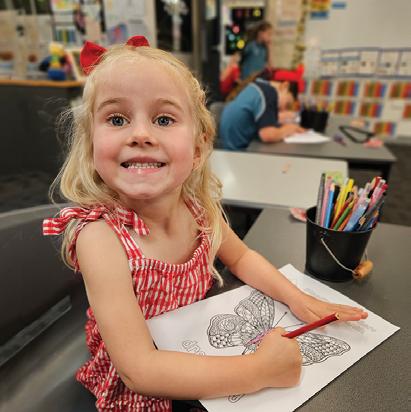
We received so many amazing entries this year, our judges had a hard time picking out the winners!


Thank you to all the children who participated. The winners are:




It was amazing seeing the community come together for Bleeding Disorders Awareness Month. This gallery is just a small sample of what went on – thank you everyone for sending us so many photos!

A ‘lunch and learn’ at Roche was well-attended by staff, with Dan and Jay sharing their personal experiences with haemophilia while HFA Executive Director, Natashia Coco, spoke about HFA and our current projects.






Haemophilia Treatment Centre teams across the country got involved, dressing in red and sharing information about bleeding disorders.


At the Blood Conference in Brisbane our haematologists dressed in red: L-R Dr Jane Mason, Dr Liane Khoo, Grace Gilmore, Prof Guy Young, Dr Jenny Curnow, Dr Domenic Pepperell, Dr Sally Campbell


Haemophilia Foundation Queensland’s ‘Great Gatsby’ themed trivia night was a great night out.
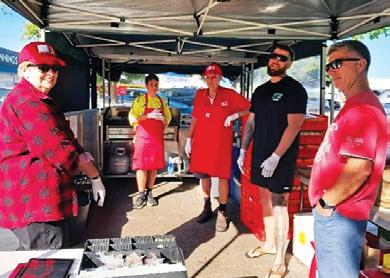
Haemophilia Foundation WA volunteers at the Bunnings Sausage Sizzle in Subiaco.
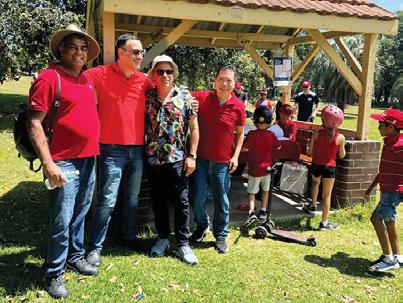
Haemophilia Foundation NSW members at the Bay Run in Robson Park.
State and Territory Foundation events are a cornerstone of Bleeding Disorders Awareness Month, with community members gathering to catch up and raise awareness.
We loved seeing so many kids participating in Bleeding Disorders Awareness Month. From class talks and colouring in to cupcake stands – their support (and the help of their grown-ups) really makes the month extra special.

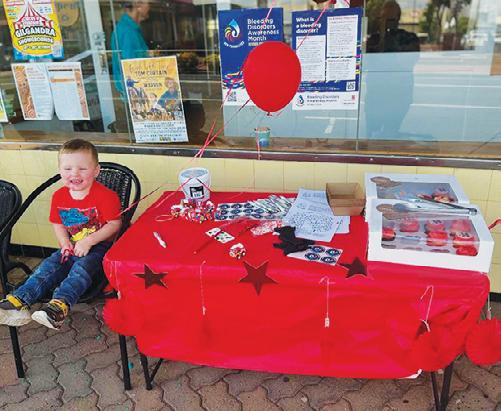
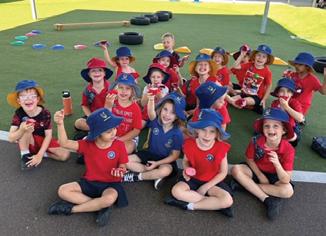



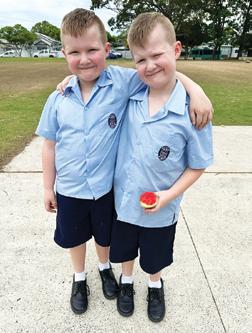


Charlie, Freddie and Maddie all helping to raise awareness.

Are you a family member, friend or supporter of someone with haemophilia?
If you don’t have a bleeding disorder, you can also participate in the PROBE Australia Study
We need 200 people WITHOUT a bleeding disorder to be a comparison group. So far we only have 90!
HFA’s high quality internationally-recognised PROBE Australia Study measures the impact of haemophilia. This is crucial data to understand our community’s needs and for advocacy and promotion of further research.
HOW CAN YOU HELP?
Please consider completing the current 2023-2024 PROBE Australia survey!
Who can complete the survey?
Adult (18 yrs+) men and women living in Australia
• Who have haemophilia/carry the gene
• OR who do NOT have a bleeding disorder (comparison group)
How to do the survey
It’s easy! Go to:
• myprobe.org for the web version
• Or download the myPROBE app from Apple Store or Google Play (Android)
• Or ask HFA for a print survey pack
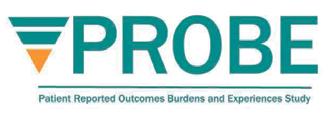
ANY QUESTIONS?
Visit www.haemophilia.org.au/probe-australia-study
Or contact Suzanne at HFA: E: socallaghan@haemophilia.org.au T: 1800 807 173

Alison Armstead
Fundraising and Event Manager (part-time) aarmstead@haemophilia.org.au
Hi! I’m Alison, and I’ve just joined Haemophilia Foundation Australia (HFA) as the new Fundraising and Event Manager. In this role, I’ll be working on creating meaningful events and fundraising campaigns to help support programs and services for bleeding disorders. I’m really looking forward to connecting with donors, sponsors and the community.
Before coming to HFA, I worked in conference event management, most recently organising large scale scientific conferences for occupational therapists working in all areas, including mental health and private practice. I’ve gained a lot of experience working in the health sector, building strong relationships, and developing successful strategies, which I’m looking forward to bringing to this role, particularly to the 22nd Australian Conference on Haemophilia, VWD & Rare Bleeding Disorders in Brisbane in October 2025.
What excites me most about this job is the chance to create impactful events and campaigns that raise awareness and funds for such an important cause. I’m passionate about making a difference and can’t wait to work with the amazing HFA team, local foundations and the broader bleeding disorders community.
Outside of work, I keep busy with my 11-year-old son and 7-year-old daughter - driving them to sports and activities. When I get some downtime, I enjoy entertaining family and friends and going for walks with our 14-year-old rescue beagle, Harry.
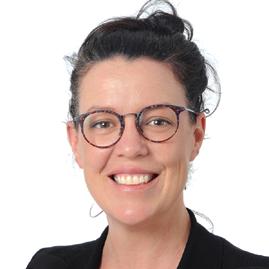
New AHCDO Clinical Research Consultant
Dr Sally Campbell is the recently appointed Clinical Research Consultant with the Australian Haemophilia Centre Directors’ Organisation (AHCDO). She will be facilitating research projects for AHCDO, which aim to improve care and treatment options for individuals with inherited and acquired bleeding disorders. There will be multiyear projects, as well as smaller single site projects. She will support the ABDR and AHCDO Research Fellows in their roles.
Dr Sally Campbell is a haematologist, working at Queensland Children’s Hospital, the Royal Brisbane and Women’s Hospital and Pathology Queensland in Brisbane. She has an interest in haemostasis and thrombosis and has published in peer reviewed journals on paediatric thrombosis as well as on inherited and acquired bleeding disorders. She has recently completed her PhD through Monash University examining the Australian experience with inherited bleeding disorders, with a central focus on new treatments for rare bleeding disorders. She is actively involved in research in her clinical practice, and both initiates her own studies, as well as participating in larger international clinical trials including gene therapy.
The team at your HTC loves to see you regularly. Here’s why.
We asked health professionals and the Australian bleeding disorders community why you should stay in contact with your Haemophilia Treatment Centre (HTC).
Each HTC around Australia has a multidisciplinary team who provide expert treatment and care for people with bleeding disorders. It’s a relationship that grows with you from the time you are a child. Both our community and HTCs agree that staying in touch is key to taking care of your health and wellbeing.


What does our community say?
‘You are not alone! The Haemophilia Treatment Centre team is there to help and can give you advice or talk over any problems or concerns or refer you to other services.’
‘Be informed and aware! Keep in touch with the HTC team to know how best to manage your or your child’s condition. And keep up with the latest on treatments and services.’
‘Stay in touch with us so we can:
• Work together to tailor your treatment as your lifestyle and goals evolve over time.
• And provide education and information around new treatment options.’
“Staying in touch with your Treatment Centre connects you to social workers and clinicians who understand the unique challenges of living with a bleeding disorder, offering support for emotional, financial, and practical aspects of daily life.
Consistent engagement with the Treatment Centre ensures up-to-date information on managing daily life with a bleeding disorder, promoting independence and confidence in navigating physical and emotional challenges.”
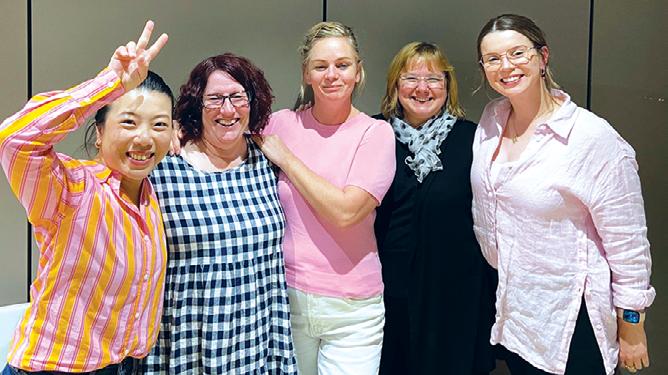
‘We love it when our patients stay in regular contact with their HTC so we can:
• Update doses of treatment for children as they grow
• Plan safely for any upcoming surgery with lots of notice
• Keep other specialist and general practitioners who are part of your care informed and updated
• Keep you updated with all things bleeding disorders.’


Staying in contact with your HTC means:
“[We can] collaborate with you and safely support physical activities, assess, monitor and maintain your musculoskeletal health, and assist with rehabilitation post bleed to ensure you return to your optimum function.”
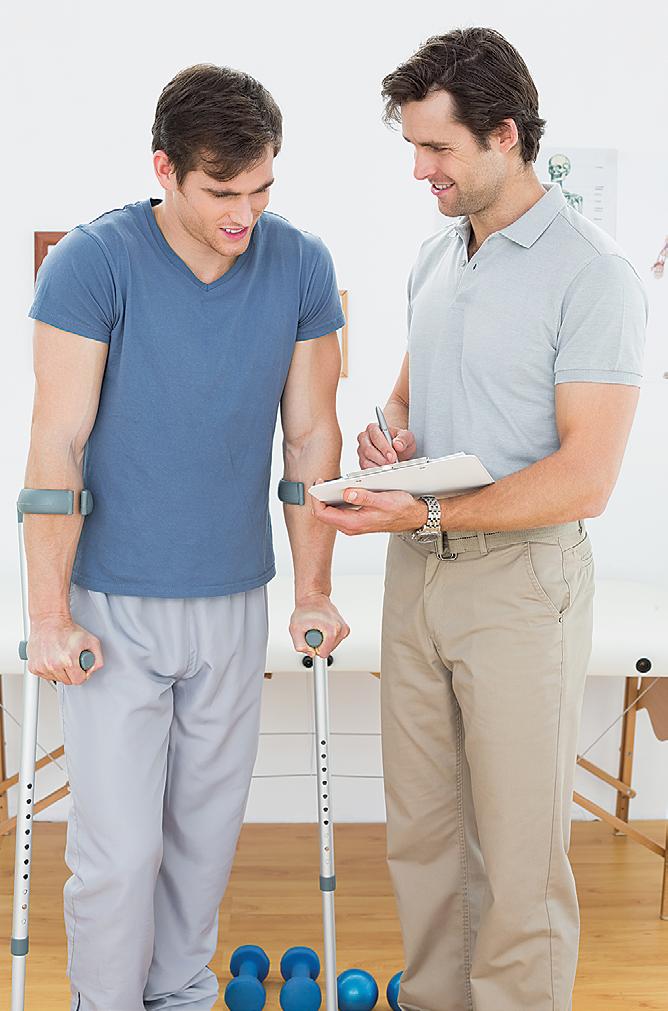
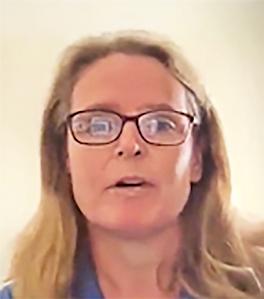



‘When you stay in regular contact with your HTC, we can continue to build a strong community.’
Dr Liane Khoo, HTC Director, Royal Prince Alfred Hospital.

‘By staying in contact we can keep schools updated and informed.’
‘Staying connected fosters a sense of belonging to a supportive community, reducing feelings of loneliness by sharing experiences and coping strategies with others in similar situations.’
Dr Janis Chamberlain, HTC Director, John Hunter Children’s Hospital
The team at your HTC is there to help you every step of the way.
‘Keep us updated with family planning so we can guide you and support you during pregnancy and for any new additions’
Jaime Chase and Alex Klever, Haemophilia Nurses



‘We can notify other Australian HTCs if families are travelling, including for holidays.
And make plans for taking factor products overseas for international travel’ - Dr Janis Chamberlain, HTC Director, John Hunter Children’s Hospital
‘I talk to them about how to pack their treatment product and that they will need to take it on board the plane as hand luggage so that it doesn’t get damaged or lost.’ - Beryl Zeissink, Haemophilia Nurse

To find your local HTC, visit www.haemophilia.org.au/treatment-centres
A huge thank you to all our contributors:
• Dr Liane Khoo, HTC Director, Royal Prince Alfred Hospital
• Dr Janis Chamberlain, HTC Director, John Hunter Children’s Hospital
• Abi Polus and Ali Morris, Haemophilia Physiotherapists
• Angela McGill and Emma Wells, Haemophilia Social Workers
• Jaime Chase, Alex Klever and Beryl Zeissink, Haemophilia Nurses
• Australian bleeding disorders community members
Stock images: Freepik; Danik Prihodko,
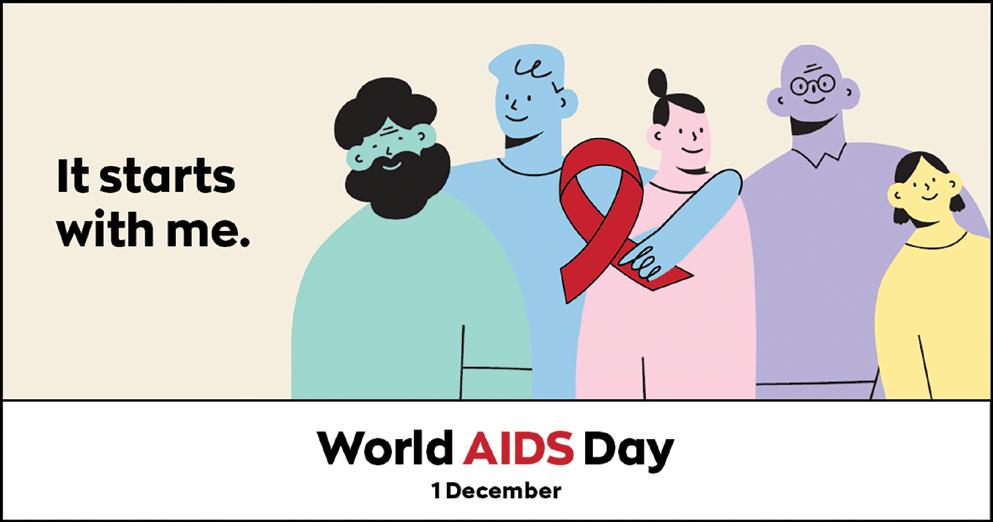
It’s a day for Australians to:
• show their support for people living with HIV
• raise awareness about prevention, treatment and care
• eliminate stigma and discrimination around HIV
• remember and honour the people we have lost to HIV.
Wearing a red ribbon is one way people show their commitment to HIV remembrance, awareness and support for people living with HIV.
In 2024 the global theme asks us to consider how we will help – to uphold human rights and support those who are marginalised or discriminated against. In Australia the national theme asks us to be proactive with It starts with me.
HIV has been part of our history and continues to be part of our community’s experience.
In the mid-1980s some adults and children with bleeding disorders acquired HIV from their plasmaderived clotting factor treatment products. Some lost their lives to HIV while others live with HIV today.
Today treatment products are much safer: the risk of bloodborne infection from products manufactured from blood is extremely low. But HIV has had a profound effect not only the people with HIV, but also those close to them, their health professional carers and the bleeding disorders community generally.
In Australia people with bleeding disorders drew on the resilience that was already a strong feature and resolved to respond to HIV as a community, taking on effective advocacy around safer treatments and providing support.
In 2024 the Joint United Nations Programme on HIV/ AIDS (UNAIDS) calls on us to take a rights path to HIV Central to this are the themes of Inclusion. Respect. Equity If we are to take on the commitment of It starts with me, what does this mean for the bleeding disorders community?
For World AIDS Day last year, our community members Neil, Mike and Anth shared short reflections on these themes. We feel they are still relevant and meaningful and worth republishing. We share them again with permission.
I’ve been very open about my HIV status for years now and I’ve been humbled by the respect shown to me by everyone I’ve told. Being free to answer questions and break down any fears has only helped my inclusion in social circles.
For me, the themes of inclusion, respect and equity provide a checklist of game-changing ideals in global efforts to a) eliminate HIV transmission, and b) care for people living with HIV. Without a sharp uptick in these areas, the world’s poorest and least powerful communities will continue to be disproportionately affected.
Mike
When I see the word ‘inclusion’, I think of how the bleeding disorders community and the HTCs have come together to deal with HIV.
Haemophilia when I was growing up in the 1950s, 60s and 70s was life threatening and I required many treatments.
The 1980s was a catastrophic period. HIV caused a lot of devastation and worry to me and my wife personally. It also brought a lot of families together, and it was this support that helped us to survive this period in our lives where so much was unknown.
We were very fortunate to have great team of doctors, nurses and a psychologist who were very understanding and supportive, and we would not have survived this time without the tireless work from HFA.
But what do these words mean to our bleeding disorders community in Australia? Those of us who have lived with HIV for over 40 years, and those of us who have seen loved ones succumb? I often feel like our part in the story of HIV/AIDS gets forgotten. While the increasing dissociation of HIV/AIDS and bleeding disorders creates safety for us, it denies our truths and remarkable achievements too.
Whether you mark World AIDS Day privately or publicly, or not at all, please know that you remain part of a community that is extraordinary for its resilience and dignity in the face of bloodborne viruses.
Visit www.worldaidsday.org.au for more information about World AIDS Day in Australia.

Sue Webzell
At various stages in their life, people with bleeding disorders will need medical procedures to diagnose or assess health problems. A common procedure is a colonoscopy and/or gastroscopy. These are types of endscopy and are diagnostic procedures that examine the gastrointestinal (GI) tract for abnormalities such as ulcers, polyps, inflammation, or cancer.
Colonoscopies and gastroscopies are routine procedures for most patients, but for patients with bleeding disorders, such as haemophilia, they may require special precautions to minimise the risk of complications.
An endoscopy is a medical procedure used to give a view of the internal parts of the body. An endoscope is a long, thin, flexible tube equipped with a camera, light and a lens for viewing. The doctor, usually a gastroenterologist, can collect pictures or videos of organs and other structures within the body.
The most common endoscopies are colonoscopies and gastroscopies.
As with any invasive procedure, management pre-, during and post-endoscopy should be planned through discussion with your haematologist and Haemophilia Treatment Centre (HTC), as the procedure can pose an elevated risk of bleeding. Management may involve treatment to prevent bleeding complications. What treatment is required, the dosage and if it is required after the procedure will depend on the severity of the bleeding disorder and the type of procedure and if biopsies or polyps are taken.
The specific plans required should then be communicated to your gastroenterologist and their team.

Gastroscopy (upper endoscopy), or oesophagoscopy, is a procedure used to examine the upper gastrointestinal (GI) tract, including the oesophagus, stomach, and duodenum. It is commonly used to diagnose and treat problems in your upper GI tract. An anaesthetic spray may be used to numb your throat in preparation, a plastic mouth guard will be placed and then the endoscope will be passed into your mouth, down your throat and oesophagus, and into your stomach. The doctor can view the lining and take tissue samples, if necessary.
Colonoscopy is a procedure used to examine the lower GI tract (large intestine), including all of the colon and rectum.
A colonoscope is inserted into the rectum to visually examine the lining of the large intestine. It is commonly used for screening colorectal cancer, identifying inflammatory bowel diseases, and detecting polyps or abnormal growths.
To reduce bleeding risk, a minimally invasive approach should be adopted, limiting the need for biopsies or other interventions unless absolutely necessary.
Also, caution will be used when inserting and manoeuvring the endoscope to minimise damage to the lining of the GI tract.
However, if the doctor sees any suspicious-looking areas, they may do:
• A biopsy – removal of a small amount of tissue from the GI tract, the stomach, oesophageal, colon or rectal lining
• A polypectomy - removal of polyps for further examination.
Patients with bleeding disorders are at a higher risk of bleeding after these interventions, so pre-procedure administration of factor replacement therapy or desmopressin (DDAVP®), alongside tranexamic acid to promote clot stability, may be required.




Specific preparation for your endoscopy will be given to you by your gastroenterology team and HTC. This will depend on the procedure you are to have. You may be required to have a gastroscopy, a colonoscopy or both in the same visit.
Preparation may include:
• Discussion with your gastroenterologist and haematologist to develop a safe plan for the procedure
• Stopping certain medications several days in advance
• Bowel prep to cleanse the intestines, which will often take several days to complete. This typically involves:
- dietary changes
- use of laxatives
- enema
• Fasting
• Infusion of replacement factor concentrates/ desmopressin (DDAVP ® )/tranexamic acid
• You will probably be given a sedative before the procedure to help you relax.
Occasionally patients may experience minor bloating, gas, or cramping after the procedure, but most return to normal activities the following day.
After the procedure, you should monitor for signs of bleeding, such as blood in the stool (after colonoscopy) or vomiting blood (after gastroscopy).
Any signs of bleeding should be reported to your HTC.
Additional factor replacement therapy or tranexamic acid may be required after the procedure to prevent delayed bleeding for up to 5 days.
In some cases, patients may remain in a hospital setting for observation for a longer period. You should plan to have someone drive you home.
• While endoscopies are a very safe procedure, bleeding disorder patients face unique challenges due to their increased risk of bleeding.
• Make sure your gastroenterologist is aware of your bleeding disorder and the treatment plan.
• Early pre-procedure planning is required. Inform your HTC sooner rather than later.
• Successful management relies on a multidisciplinary approach involving gastroenterologists, haematologists, haemophilia nurses and laboratory staff.
1. Melvil. A flexible endoscope. 2017. https://commons.wikimedia.org/wiki/File:PENTAX_ Colonoscope001.jpg. Photo licensed under Creative Commons Attribution-Share Alike 4.0 International license.
Cancer Council. Endoscopy. https://www.cancer.org.au/endoscopy Accessed 27 September 2024.
Mayo Clinic. Upper endoscopy. https://www.mayoclinic.org/tests-procedures/endoscopy/ about/pac-20395197. Accessed 27 September 2024.
Mayo Clinic. Colonoscopy. https://www.mayoclinic.org/tests-procedures/colonoscopy/ about/pac-20393569
Accessed 27 September 2024.
Cancer Council. Colonoscopy. https://www.cancer.org.au/colonoscopy
Accessed 27 September 2024.
Australian Haemophilia Centre Directors’ Organisation (AHCDO). Guidelines for the management of haemophilia in Australia. Canberra: National Blood Authority, July 2016. https://www.blood.gov.au/guidelines-managementhaemophilia-australia
Accessed 27 September 2024.
MASAC recommendations for bleeding prophylaxis in bleeding disorder patients undergoing GI endoscopy. MASAC Document #261. National Hemophilia Foundation, 2020. https://www.bleeding.org/sites/default/files/document/ files/261_endoscopy.pdf .
Accessed 27 September 2024.
Stock photos: Freepik
Sue Webzell is Haemophilia Clinical Nurse Specialist at Hollywood Private Hospital, Perth, Western Australia

My name is Claire and I am the mother of two young boys who have severe haemophilia A.
As a couple, my husband Ben and I loved travelling. After having one boy, and then another boy, travelling was always going to be on the cards. And we would not let haemophilia stop us.
However, traveling overseas with the boys has had its challenges.
We have to be very organised from the moment we purchase our plane tickets.
We need to let our Haemophilia Treatment Centre know about our future travels and plans; they organise letters and extra factor, which we pick up from the hospital.
When we initially travelled, we had an esky that would keep our factor cold up to 12 to 14 hours. So, we had to have a stopover if we were going to travel to Europe for example. We would therefore stop at Dubai International Airport Hotel, which is located inside the airport, we would have 10 to 12 hours stopover, allowing us to put our medication into the bar fridge of our room, and refreeze the ice packs in the freezer.
When we were travelling with our oldest son, who used to have a port-a-cath and would be infused 3 times a week, it was a lot of factor to carry as we would have almost double the amount of factor if a bleed occurred overseas. We also had to carry needles, saline water, factor VIII (8) for a 3-times a week dosing and extra factor in case of a bleed.
Then, there was a change in medication, and way less factor to take with the new treatment; however, all medication had to be transported in an esky. We have now a new esky that is much more efficient than our old one and that keeps the medication at 5 degrees up to 36 hours. It has made travelling much easier and there is no need for a stopover these days.
In our experience, we haven’t had issues with most airlines when carrying our medication.
One time an airline made an issue regarding those extra few kilograms: wanting to charge us for that extra weight and telling us to put the medication into the checked luggage.
We were even offered an extra 10 kg of checked luggage; as much as we appreciated the gesture, it was also pretty pointless in our case as we had to take the medication on board as it had to stay in a cooler bag with us. >>
I raised this matter to the Victorian Equal Opportunity and Human Rights Commission under indirect discrimination: ‘Indirect discrimination is defined as when there is a rule or policy that is the same for everyone but has an unfair effect on people with a particular disability.’
I believed this was discriminating towards people who had to travel with medication.
This particular airline did not have a clear policy on their website and wanted us to pay for extra carry-on luggage.
After all, it isn’t something we choose to travel with, it is something we have to travel with.
After few months of back and forth, I was granted an extra 10 kilos of carry-on luggage for a period of 2 years from this airline.
These days we do not have this issue, as even with two boys with haemophilia, we have way less medication
and airlines are fine with us when we are travelling. We have travelled to France, Bali, Spain, we have cruised around the Mediterranean Sea, we have just been back from Borneo, Malaysia. It was a bit of an adventure. We encountered some limitation in our planning though; for example, we wanted to do a jungle stay, which we couldn’t as there is no refrigeration possible in the jungle – which is fine, we are already very lucky to be able to travel.
We are already planning our next trip to Canada next year… The sky is the limit!
We are very grateful for the new treatments that have been made available in the past few years and made travelling so much easier.
Stock images: Freepik
Claire is a member of the Australian bleeding disorders community

Emma Wells
For young people who have a chronic illness such as a bleeding disorder, navigating the school years can involve significant challenges. While the impact of the bleeding disorder will vary depending on the young person and the severity of the condition, the aim is to encourage each young person to engage with school activities, like any other child. Along the way, there are a range of supports and approaches which can be accessed if the need arises.
Besides the support provided by your Haemophilia Treatment Centre (HTC), here are a few reminders for navigating school challenges
Every young person reacts differently to stressful situations but building communication pathways ensures you are aware of how they are coping, especially when adjusting to new or unpredictable experiences. The school environment can be challenging and can create feelings of uncertainty and isolation whether the young person is in kindergarten or high school. For example, there may be a fill-in teacher or a new student or the student may be returning to school after an extended absence.
The young person’s ability to self-regulate their reactions and behaviours will help them to manage change and this can be developed through respectful, kind and positive relationships.1
Children benefit from identifying and learning about their emotions and skilling young people with coping strategies such as mindfulness techniques or breathing exercises can be useful to fostering confidence and wellbeing.
Whilst some worrying can be normalised, if a young person has ongoing anxiety or fear that is impacting on their daily routines, it is recommended you request extra support.
Parents/carers and families can help develop the young person’s self-esteem through acknowledging and valuing their uniqueness and building on their strengths. This can be facilitated through spending quality time with the young person, building trust, communication and positive attention.2
Parents/carers and family members can show interest in the young person’s school learning journey by being enthusiastic and curious. An example of this might be through finding a shared interest and visiting a library together to research and read about the topic.
School friends and peers are important for young people as they ensure feelings of connection and acceptance. If possible, encourage and support the development of friendships by planning a play date or a meeting in a local park. Additionally, friendships with young people away from the school are valuable, such as through a sporting or activity group in the local community.
Encourage your young person to identify a key person who they can talk to if they have issues at school and follow-up on concerns promptly if needed. Some schools offer to assist with a ‘buddy system’, where the young person is matched with a classmate, and this can be especially positive to assist in times of adjustment, such as when commencing kindergarten or moving schools. >>

If the family is experiencing adverse life events it may be beneficial to provide an update to your young person’s teacher so that extra support can be sought, if needed.
As a parent/carer you are the expert on your child and your input is indispensable, so reach out to your child’s teacher if you have concerns. Additionally, some schools have well-being teachers and access to specialist staff who can provide support for the young person, if required.
The aim is for the school to treat your young person like any other and to avoid the bleeding disorder from defining them and accordingly, some young people request that their diagnosis is kept confidential.
If incidents of bullying or discrimination occur, reach out to the school for support and advice.
Check the school is informed and prepared with up-todate information about your young person’s diagnosis, including their individual health support plan. Ensure you feel as confident as possible with your child’s
teacher and school staff and contact your HTC if you need any assistance with this process.
Advising the school about absences to attend medical appointments is important and your HTC can provide attendance certificates if needed. If the young person is absent for extended periods, work with the student’s teachers to find a flexible learning plan to suit the young person, for example online learning, an alternative assessment, or extended deadlines.
If your young person has missed significant amounts of school time due to their diagnosis, tutoring assistance is available through the Ronald McDonald Learning Program. Your HTC Team can help with a referral to this excellent free service.
Parents and carers are influential role models and young people learn to react and regulate their emotions by observing how family members cope. This can be demonstrated by appropriate resilience and coping strategies, such as by being flexible and optimistic even during times of unpredictability.
It is well recognised that maintaining routines is beneficial in ensuring young people feel safe, as there is predictability and structure. Routines can assist with home-to-school routines and has been associated with improved cognition, family functioning, social skills and improved sleep patterns.3
Additionally, family rituals are powerful in connecting families and ensuring children feel safe4, for example, sharing a question at dinner time about everyone’s highlight of the day, or a family movie night on a weekend.
If there are concerns about the young person, their siblings or if the family/carer is experiencing significant issues, reach out to your school, general practitioner, HTC or other services for support.
It is important to acknowledge that life for young people with a bleeding disorder may involve extra challenges; however, supports are available. Through a combination of approaches and services, schools can provide a nurturing, stimulating and safe environment which supports young people academically, emotion-ally and socially to ensure happy, healthy and active lives.

Kids Helpline - 1800 551 800
eSafety Commissioner - esafety.gov.au
Raising Children Network - raisingchildren.net.au
1. Raising Children Network. School age: behaviour. raisingchildren.net.au/school-age/behaviour
Accessed 13 November 2024.
2. Raising Children Network. School age: connecting & communicating. raisingchildren.net.au/school-age/connecting-communicating. Accessed 13 November 2024.
3. Arlinghaus KR, Johnston CA. The importance of creating habits and routine. American Journal of Lifestyle Medicine. 2018 Dec 29;13(2):142-144. https://doi.org/10.1177/1559827618818044
4. Raising Children Network. School age: family life. raisingchildren.net.au/school-age/family-life
Accessed 13 November 2024.
5. Berk LE. Child Development. 7th edn; Pearson International Edition. Boston, USA: Pearson Education Inc, 2006.
6. Better Health Channel. Victorian Government. Chronic illness – coping at school. www.betterhealth.vic.gov.au/health/healthyliving/chronicillness-coping-at-school
Accessed 6 November 2024.
7. Frogner L, Hellfeldt K, Ångström AK, et al. (2021). Stability and change in early social skills development in relation to early school performance: a longitudinal study of a Swedish cohort. Early Education and Development. 2021;33(1):17–37. https://doi.org/10.1080/10409289.2020.1857989
8. NSW Department of Education. Understanding bullying. 16 July 2024. education.nsw.gov.au/schooling/schooling-initiatives/antibullying/educators/understanding-bullying
Accessed 6 November 2024.
Stock images: Freepik; RDNE Project and Ron Lach for Pexels.com
Emma Wells is Paediatric Social Worker in The Children’s Cancer and Haematology Service, John Hunter Children’s Hospital, Newcastle NSW.


Hi, my name is Cassie and I have type 3 von Willebrand’s.
I am on twice a week prophylaxis and have more when required for bleeds.
Cassy spoke to HFA about growing up with type 3 von Willebrand disease (VWD), which is a severe form - and her journey to take charge of her treatment.
What was it like growing up with VWD?
When I was in primary school, I missed a lot of school for hospital trips. For a long time, I had to go to hospital twice a week to do my medication there. Since we lived an hour and a half away from the hospital, this was quite intense for my parents.
I also missed out on some school sports because the teachers were scared of what could happen. It didn’t affect my friendships, but I got very frustrated missing out on sport.

I got very frustrated missing out on sport.
How did you learn to do your own treatment?
After year 6, I went away to boarding school. This meant I had to be able to do my own needles. I would have been about 11 or 12 years old.
I had a massive needle phobia. Every time the doctors would try to give me a needle, I would move my arm away. We would be there for up to an hour sometimes waiting for me to keep my arm still. So learning to give myself a needle was a very big thing for me.
The social worker at the hospital was a massive help – and all the nurses and doctors there were really helpful. They had lots of great tips for me about self medicating, and were just super encouraging.

I’m a barista. It’s not a job you can just leave work early.
I have quite heavy periods that last around two weeks, which was a lot for me, especially at boarding school. I often woke up with lots of blood on my bed.
I went on the pill to stop my bleeding when I was about 16. That’s been a journey! Some pills can really mess with my emotions, and some didn’t quite stop my periods, resulting in months of nonstop breakthrough bleeding. So that has been a lot of trial and error.
I had to start leaving work because of heavy bleeding, and then I realised that was not something everyone had to do. I’m a barista in a tourist destination. It’s not the kind of job that you can just leave work early - sometimes it’s too busy to even have a break. You really have to be able to just work. I did my best to manage this by having extra Biostate® (factor VIII/VWF concentrate) during my period, sometimes daily.
More recently, I have been using the Mirena® IUD to control my periods. I also have always used tranexamic acid during the heavier days of my period or for other bleeds.
I have struggled with anaemia and iron deficiency a lot in the past, which meant I was very tired. This mostly impacted me when I wasn’t on the pill/Mirena. I often missed social stuff or felt I wasn’t able to complete university/school assignments to the best of my ability because I was just too tired. I’ve had lots of iron infusions, which have been so helpful. I eat a lot of red meat and I also have iron tablets – they help a bit.
If there’s something wrong and you go to a doctor and they say it’s fine, go to another doctor. Don’t let them dismiss you. Sometimes you really just need to advocate for yourself.
I tried a pill that didn’t quite work and I ended up having a 3-month period. When I went to the GP about it, she told me it was just normal for my bleeding disorder – to just keep having my medication and it would stop soon. It did not stop soon! I ended up going to a different GP and she put me on a different pill, which stopped it almost immediately.

Sometimes you really just need to advocate for yourself.
For more information about teenage girls and bleeding disorders, visit the GIRLS section on Factored Inhttps://www.haemophilia.org.au/youth/girls/ Stock photos: Freepik; Andrea Piacquadio for Pexels.com
World Haemophilia Day
17 April 2025
wfh.org/world-hemophilia-day
WFH 2025 Comprehensive Care Summit Dubai, UAE
23-25 April 2025
wfh.org/ccs2025
22nd Australian Conference on Haemophilia, VWD and Rare Bleeding Disorders, Brisbane
16-18 October 2025
www.haemophilia.org.au/conferences
Haemophilia Foundation Australia (HFA) acknowledges funding grants received from the Australian Government. We thank the individuals, service clubs, philanthropic trusts and businesses that have made donations to HFA. We acknowledge the education and awareness grants and/or conference sponsorship from the following pharmaceutical companies:
CSL BEHRING | NOVO NORDISK | PFIZER AUSTRALIA ROCHE | SANOFI GENZYME

The HFA Council and Staff wish you a happy and safe festive season.
Thank you for your support during 2024 and we look forward to working with you again in 2025.
The HFA office will close Monday 23 December 2024 and will reopen on Monday 6 January 2025.
During that time if you have any urgent queries phone 03 9885 7800 or email: hfaust@haemophilia.org.au
Messages will be monitored, and we will respond as soon as possible.
NATIONAL HAEMOPHILIA is a publication of Haemophilia Foundation Australia. Every effort is taken to ensure accurate and relevant content, however opinions expressed in NATIONAL HAEMOPHILIA do not necessarily reflect those of the Foundation or the editor, nor is any information intended to take the place of advice from a qualified medical practitioner or health professional.
Haemophilia Foundation Australia does not endorse or assure the products, programs or services featured in NATIONAL HAEMOPHILIA and does not make specific recommendations for any products, programs or services.
We welcome reproduction of articles or quotations from NATIONAL HAEMOPHILIA on the understanding that acknowledgement is made of NATIONAL HAEMOPHILIA as the source.
Haemophilia Foundation Australia acknowledges the Traditional Owners and Custodians of Country throughout Australia, the land, waters and community where we walk, live, meet and work. We pay our respects to Elders past, present and emerging and extend that respect to all Aboriginal and Torres Strait Islander peoples.